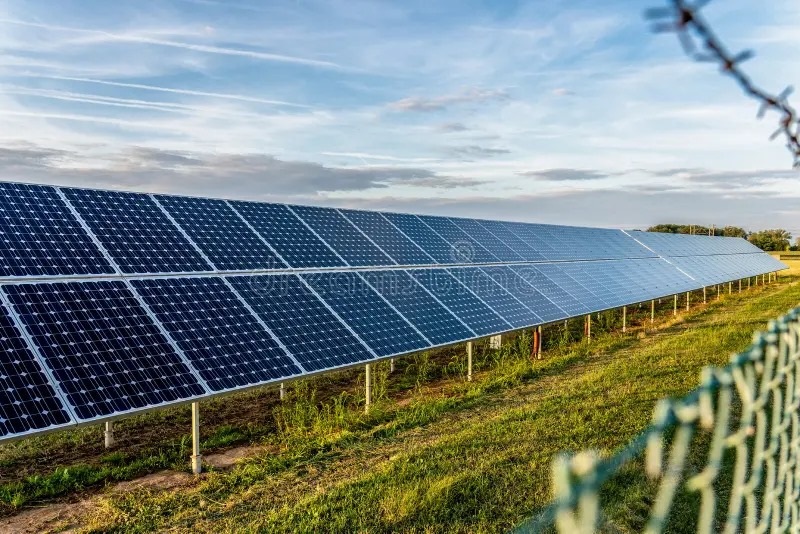Solar Fence

- Overview: What is solar fencing?
- Importance of Solar Fencing: Benefits of using solar-powered systems for security and boundary demarcation.
- Eco-Friendly Solution: How solar fences contribute to sustainability and energy savings.
How Does an Solar Fence Work?
- Solar-Powered Operation: Details on the solar panels and energy storage.
- Efficient and Cost-Effective: Low operational costs with no reliance on the grid.
- Continuous Power Supply: Solar panels charge during the day for round-the-clock operation.
- Durability and Weather Resistance: Robust materials designed to withstand harsh environmental conditions.
- Low Maintenance: Minimal upkeep needed compared to traditional fencing systems
Key Components of an Electric Fence
- Energizer (Fence Controller): The heart of the system, it produces the electrical pulse that energizes the fence wires.
- Fence Wire: The actual wire that carries the electric current. It is available in various materials, such as steel, copper, and aluminum.
- Insulators: These are used to keep the wires in place and prevent the electricity from grounding.
- Grounding System: A series of grounding rods to ensure the current flows correctly and safely into the ground.
- Warning Signs: Displayed on the fence to warn people of the electric shock, which is required by law in many regions for safety and legal compliance.
Components of Fence system
- Solar Panels: Power generation and efficiency.
- Batteries: Storage capacity for night-time operation.
- Energizer Unit: The device that delivers electrical power to the fence wire.
- Fence Wire: Type and strength of the wire used in solar fencing.
- Fence Posts: Material and design of posts for stability and durability.
- Warning Signs: Placement of signs for safety and compliance.
How Solar Fence work
- Solar Panel Power Generation: Process of converting sunlight into electricity.
- Energy Storage and Distribution: How stored energy powers the fence system at night.
- Electric Pulse Delivery: How the energizer sends electric pulses through the wire.
- Safety Mechanisms: Built-in safety features to ensure no harm is caused to humans or animals.
benefits Of Solar Fence
- Warning Signs: It is important to place warning signs on the fence to alert individuals of the electric charge, as required by law in many countries.
- Proper Grounding: Ensuring the fence is properly grounded is essential for safety and effective operation.
- Legal Regulations: Some regions have specific laws governing the use of electric fences, such as height restrictions and the type of current used.
- Preventing Accidents: While the shocks delivered by electric fences are designed to be non-lethal, precautions should be taken to prevent accidental contact, especially with children or pets.
Installation Process
- Survey the Area: Assess the perimeter where the electric fence will be installed to determine the best layout and placement for posts and wires.
- Select the Appropriate Energizer: Choose an energizer with enough power to cover the intended area and meet local electrical standards.
- Installation Process: The fence wire is attached to posts and insulators, the energizer is connected, and the grounding system is established.
- Test and Adjust: After installation, the system is tested to ensure it is functioning correctly and that the voltage is within safe yet effective ranges.
Applications of Solar Fencing
- Residential Security: Protecting homes and private properties.
- Agricultural Uses: Preventing livestock from escaping or keeping wild animals out.
- Industrial/Commercial Properties: Securing large premises with minimal energy consumption.
- Wildlife Conservation Areas: Non-intrusive fencing for protecting wildlife reserves.
Maintenance of Solar Fencing
- Regular Inspections: Checking the system for wear and tear, especially after storms or extreme weather.
- Cleaning Solar Panels: Ensuring panels are clear of dust, debris, and dirt for optimal performance.
- Battery Maintenance: Periodic checks to ensure batteries are in good condition.
- Wire and Fence Check: Inspecting for damages to wires or posts.
- Solar-Powered Energizers: Solar-powered systems offer a sustainable solution, especially for remote or off-grid locations.
- Enhanced Durability: New materials and technologies are being developed to make electric fences more resistant to weather conditions, corrosion, and tampering.
- Integrated Security Systems: Future electric fences will be increasingly integrated with alarm systems, surveillance cameras, and motion sensors to provide comprehensive security.
Conclusion
- The Future of Solar Fencing: Advancements in technology and its growing role in energy-efficient security solutions.
- Final Thoughts: How solar fencing offers a modern, eco-friendly alternative to traditional security methods.

